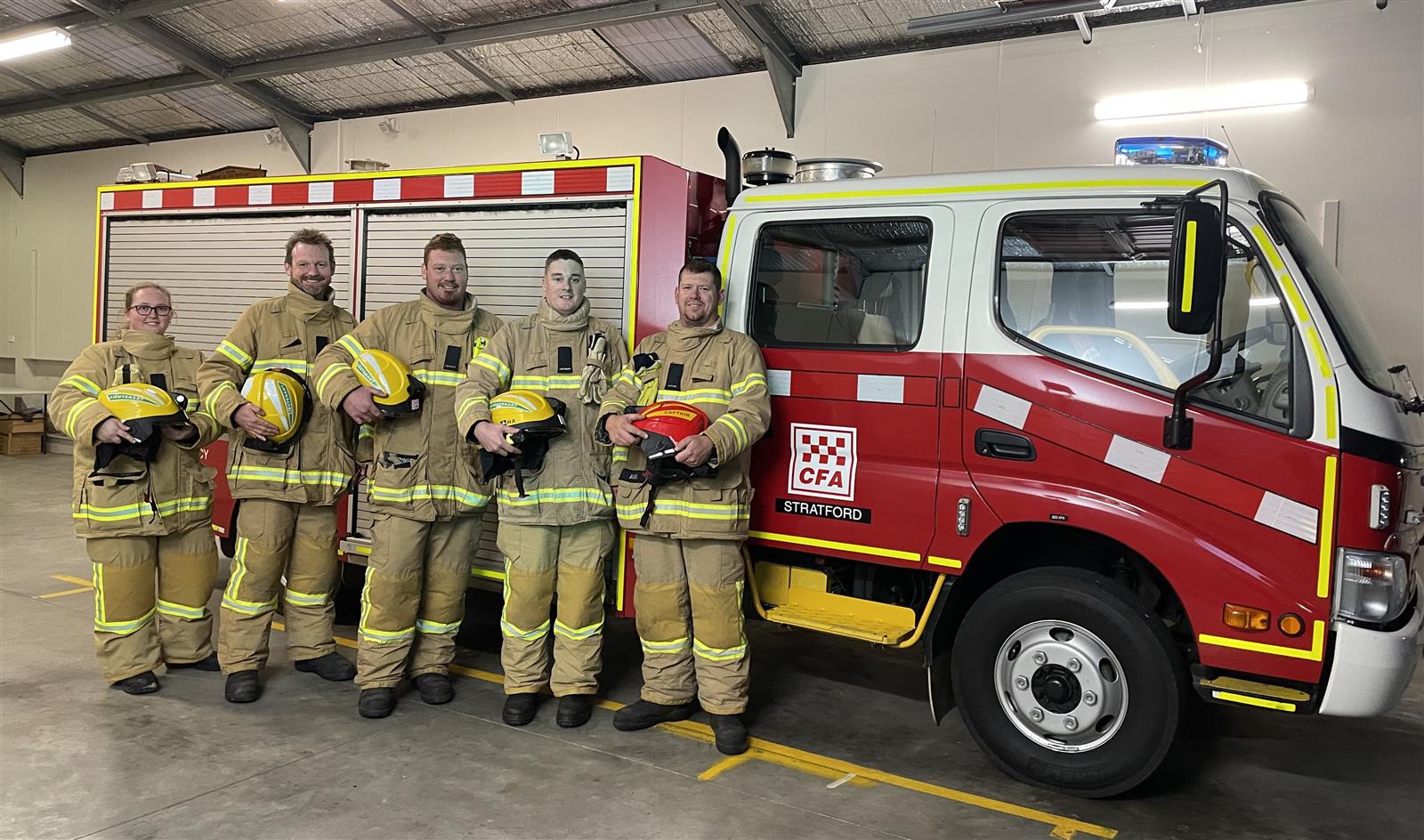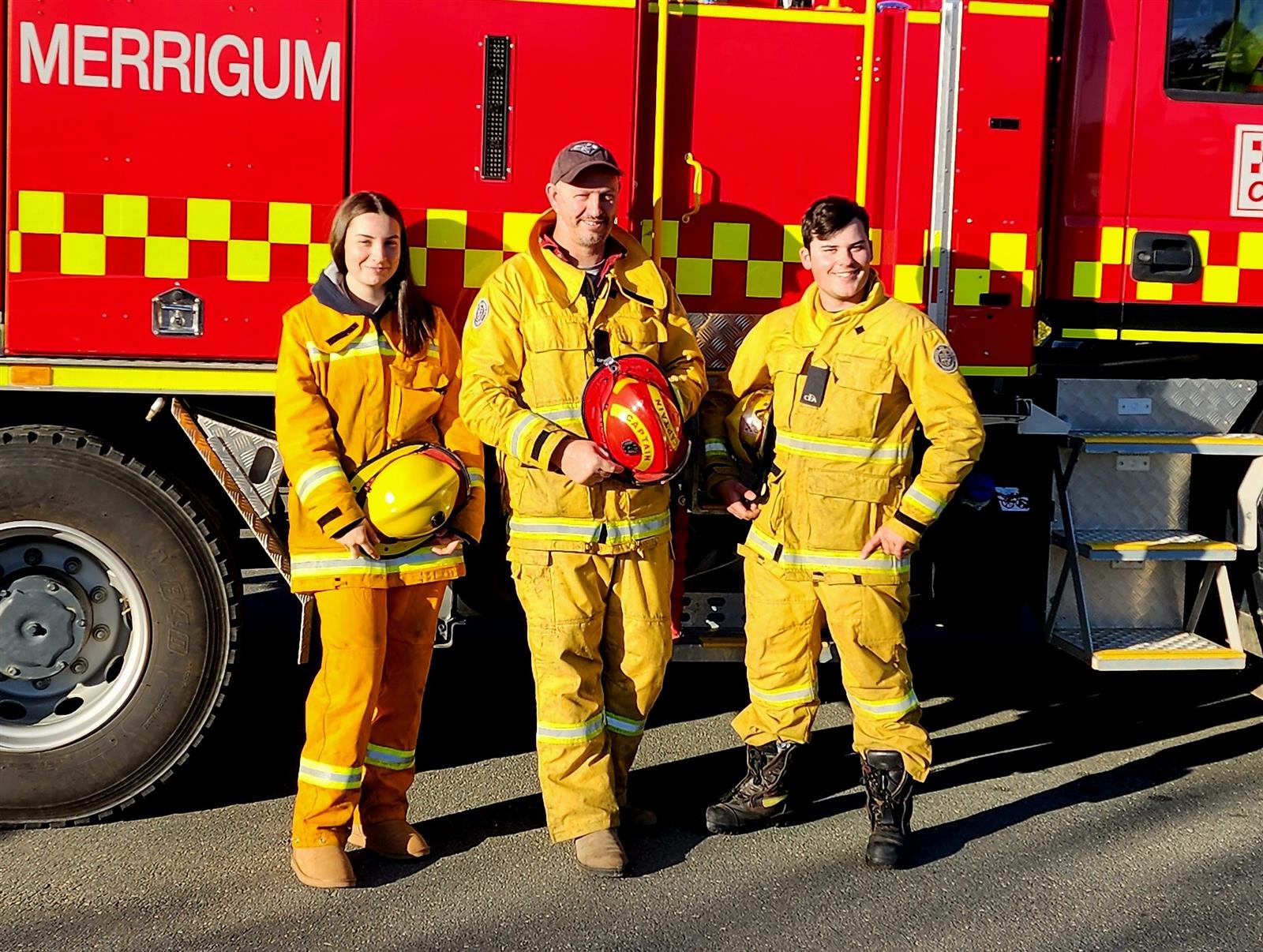Retaining young volunteers
 Stratford Fire Brigade BMT
Stratford Fire Brigade BMT
As our workforce of seasoned and experienced firefighters decide to step down from the truck for the last time, a pressing challenge emerges: how do we develop the next generation of CFA volunteers?
In this article we explore some strategies brigades can adopt to help ignite young
people’s passion for a lifelong commitment to CFA. Before you continue to read this article, it would be worth recalling a time from your youth when you felt fully engaged and when everything seemed to be going right. It could have been during your days as a CFA Junior or a young CFA volunteer, or perhaps an experience at school or on a sports team. What do you believe were the essential factors that made that period or experience so captivating to you?
The HeartWood Framework for Community Youth Development (developed by the HeartWood Centre for Community Youth Development in consultation with young people) has created positive experiences for young people and adults for more than 30 years. HeartWood first shared this framework with CFA in 2017 and it has helped us to better understand our young volunteers including their values and what drives them. It also gives us some strategies or ‘tools for growth’ that we can use to better engage with the next generation of volunteers.
CORE VALUES
At the centre of the framework are the core values that young people have identified as essential for them to feel included in their community.
Follow their passions: The opportunity to explore and identify passions and then pursue them is crucial. Some young people may be unsure of their passions, so providing opportunities that spark their curiosity through diverse experiences and activities can help uncover passions they didn't realise they had.
Make a difference: Young people want to be actively engaged in activities that make an impact in a community.
Taking action: Young people are action-oriented and prefer actively participating in activities rather than merely discussing them.
Connecting with others: Most young people are keen to meet others and make genuine, meaningful connections.
Having fun: There needs to be an enjoyment factor for young people to feel engaged and connected.
TOOLS FOR GROWTH
The framework provides us with some strategies that adults and leaders in a brigade can use to help young volunteers achieve these core values.
Meaningful contribution (helping, serving in some way): Young people volunteer because they want to be involved in an action or effort that significantly impacts and adds value to a group, project or community. Consider ways you can involve young members of your brigade in activities that are meaningful.
For example, Bamawm Extension Fire Brigade Captain George Calleja involves his younger members in their Annual Dinner Committee.
“They transformed our annual dinner from a formal presentation night to a fun celebration of our brigade and the amazing contribution of our members,” George said.
“The young members create a slide show and step into roles like MC. I can now sit back and enjoy the night and take pride in my brigade.”
Adventuresome learning (exploration, excitement, challenge): Young people like to engage in real life experiences that challenge them and push their limits in a safe way. CFA offers plenty of opportunities for adventurous learning experiences through brigade training nights using mobile training props, visits to various training grounds and taking courses that encourage young people to step outside their comfort zones.
The CFA Cadets Camp allows 16 and 17-year-old members to experience a weekend of challenge and adventure. Xavier Marshall from Springfield Fire Brigade gave a glowing report about the Cadets Camp he attended.
“A highlight of the camp for me was the search and rescue activity we did at VEMTC Sale where we went through a simulated house filled with smoke,” Xavier said. “We used thermal imaging cameras to detect any trapped people. The weekend was the best thing I’ve ever done with CFA.”
Supportive peers: Young people want to be able to interact in an atmosphere that gives them a sense of belonging. They want to feel appreciated and supported by other members. Relationships rooted in mutual support and acceptance help all brigade members nurture each other’s strengths and encourage growth.
Merrigum Fire Brigade Captain Jesse Speed (pictured in the middle of the photo below) shared a story about how the brigade’s management team identified a young man in their community, Ayden Shepherd (pictured right in the photo), who had some skills they thought would be valuable as a CFA member. They invited him to join the brigade. To ensure he had another young person to connect with Jesse also persuaded his own daughter Kayla (pictured left) to join the brigade.
“The energy these young people bring to our brigade is incredible,” Jesse said. “The two of them support each other and the banter between them is infectious and brings a fun aspect to our brigade again.”
Empowering culture: As young people grow and develop they want opportunities for leadership and the freedom to exercise real control and power in a culture that practises trust, honesty and open communication. An empowering culture grants young members a sense of responsibility and control over matters that directly affect them.
Kurt Sorensen, a member of Chiltern Fire Brigade, actively participates in the District 24 Youth Reference Group. This forum is a space for young members to discuss issues that impact them, share ideas and express their opinions. Kurt also represented District 24 on the Young Adults Advisory Committee.
“Amplifying the voices of young people is crucial for shaping a positive future for CFA,” Kurt said. “Through these platforms, I have built strong networks, learned from others and deepened my passion for CFA. As a result, I have taken on leadership roles within my brigade.”
Youth-adult partnerships (informally and formally): This concept focuses on partnerships between young people and adults founded on mutual respect and shared learning. It transcends traditional roles such as coach or mentor by harnessing the skills and knowledge of young members and fostering an environment where adults and young members engage in reciprocal learning and growth.
Newly-elected Stratford Fire Brigade Captain Brent Barker will lead a young brigade management team over the next two years (pictured above). He’s keen to start a buddy system at his brigade so that the experienced members can support the new recruits.
“You can get lost if you don’t have someone to help you,” Brent said. “On the flipside, the older members learn from the young ones as practices have changed since they completed their qualifications.”
It has been difficult to retain young members and Brent thinks creating more youth-adult partnerships will help with retention.
This framework might appear simple and straightforward, but there is a complexity in how we can use its components. The components are not isolated pieces. Instead they interact with each other, and it's beneficial to use more than one tool at a time. The framework provides a method for considering what is necessary to create engaging experiences for both youth and volunteers of all ages.
Learn more about the HeartWood Framework by hosting a ‘Valuing youth and young adults as volunteers’ workshop. Contact your local Volunteer Sustainability Team to arrange a workshop.
REFLECTIONS FOR YOUR BRIGADE
Did any elements of the framework stand out to you?
When you reflected on your experience as a young person did the essential elements that you identified appear anywhere in the framework?
Are there activities or initiatives you could introduce at your brigade to help young members experience a positive atmosphere?
 Kayla Speed, Jesse Speed and Ayden Shepherd, Merrigum Fire Brigade
Kayla Speed, Jesse Speed and Ayden Shepherd, Merrigum Fire Brigade-
-
-
-
| Submitted by |
Elaine Hamilton |